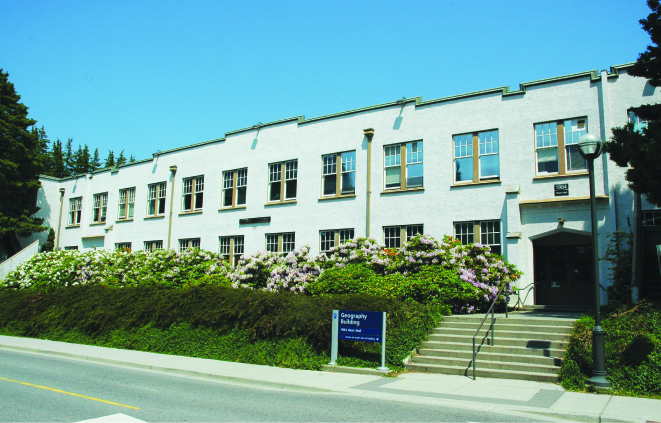Okay, I apologize for this question because you’ve probably been asked it a million times now, but how did you get come up with the idea for Jackets for Jasper?
Len and I travelled in Nepal in 2011 and we came to know our guide, Kamal, and his family well. We were asked to consider sponsoring his niece, Resmi, and after some weeks’ deliberation, we agreed to. Fast forward half a year: Kamal phones us at home to say that he has had a baby boy, his first child. Imagine our surprise when he asked us to name him! (We chose the name Jasper). Now, we knew, we would be sponsoring his education as well. In doing the math, we realized we would need to come up with somewhere between $50-70,000 to sponsor both children for their entire educations from pre-K through to high school graduation, more if we continued beyond high school.
Len, the more entrepreneurial between us, thought that we should try to purchase and import some of the lightweight down jackets that we so liked when we were in Nepal: many families and small manufacturers specialize in making this type of clothing for the mountain adventures that tourists undertake in Nepal, and we had purchased some as gifts for our family and friends for xmas. Kamal went from factory to factory (really just all small shop fronts) until he found jackets that “didn’t make you look like a chicken”, i.e., the quality was good and the feathers stayed on the inside! After receiving some samples, we selected Rajan Dulal, still our manufacturer today. After working with him to come up with more flattering jacket designs, we decided to import 100 and see if we could sell them. They were a huge hit and so that is how the idea was born that we could import one of the few items that Nepal excels in manufacturing and sell them here to raise funds for the children’s educations.


Clockwise: Elizabeth Leboe, Lenard Reid (my partner), Kamal Adhikari (Jasper’s dad), Resmi Nagarkoti (the first girl we sponsored) Photo by Pramila Parajuli
More details: http://jacketsforjasper.com/pages/our-story
Do you make a living from the charitable business? Or do you work in addition to all the work for the business?
From our start in November 2012 to Jan 2014, Liz and Len both worked full-time in their “real” jobs: Len as a sales director for a Vancouver-based high-tech company, and Liz as the waste reduction coordinator for the North Shore (North Shore Recycling Program). But the pressures of having 4 jobs between 2 people became too much, and we had to decide: what will we drop? After working through our family finances, we decided to go with our hearts, and Liz resigned from her position to continue work on Jackets for Jasper. It is more of a labour of love than a career: the “pay” is not enough for a single person to live on. Now that Liz works full-time on J4J, she receives an annual ‘honorarium’ from the business to make it possible to continue doing this important work, but it would not be possible to continue in this almost-volunteer capacity if Len were not working. So, no, I do not really make a living (financially) from this charitable business, but between 2 people, we have found a way to continue doing the work.
What’s an average day like for you?
No day is the same, which is part of what I like about the work I now do. Since I have never run my own business before, every month holds something new to learn, quickly! For example: building a website and webstore: coding in HTML; communicating with a large and growing list of people; how to import goods and broker shipments from a foreign country; how to collect and pay PST and GST; how to set up and report and pay taxes for a partnership; how to dissolve a partnership and set up an actual corporation!; how to design patterns for flattering clothing (never thought I’d be doing that after my B.Sc. in physical geography!); how to manage inventory; learning Nepali!
Until April 25, when the devastating earthquakes started to hit and destroy so much of Nepal’s homes and infrastructure, a day would typically involve hours on the computer and phone (what job doesn’t) communicating with people and planning, writing, online publishing, and always more spreadsheets than I care to admit. Often I would also be physically dealing with jackets – a thousand of them – labelling and tagging them, inventorying them, folding them, storing them, finding them, mailing them, etc. Depending on the time of year, it would either be with customers (winter) or with tax people (spring) or with my manufacturer (summer) or with our partners planning sales events (fall).
Since the earthquake, my days now have shifted as have our priorities: now my “evening” is generally in our daytimes, as most Vancouver evenings I have had to be on the phone to our Nepali friends, often with the help of translators, as we organized to obtain food and build shelters for the many many people who lost their homes.
Was this project something you would’ve imagined yourself doing when you were in school? If not, what had you planned to do after graduation?
Never in a million years could I ever have imagined doing this work: Nepal? Designing down jackets? Running an online shop? Supporting children halfway around the world? Never.
I had planned to work in the field of geology, which I did for many years, after completing an M.Sc., for federal and provincial governments and for private industry. I wanted to do field geology (glacial, not hard-rock) and I did that for years. But after a time, it slowly lost its shine as I started wishing I could settle a bit more in one place without having to always move around and miss summers with my friends, and become more involved in my own community, etc. So my post-graduation plans really bear absolutely NO resemblance to my actual career path. You could say that NO single job I’ve had since leaving the field of geology has had a direct link to my B.Sc. (Phys. Geog.), but EVERY job I’ve had has used the skills and connections I’ve had due to that degree. Plus, the fact that I’d spent so much time in the mountains as part of my field work for the UBC Dept of Geog when I was a student there is probably a direct link to why I ended up in the mountains of Nepal later in life.
Do you have any advice for current Geography students who may be worried about what to do after graduation?
Hmmmm. Advice? Not so good at advice… but. Know that the skills and knowledge you acquire through studying Geography set you up by default to be curious about such a vast array of places, things and people that you can find yourself fitting into a career or volunteer service in just about any industry without a stretch. You will find that what you’ve learned will serve you well in your first job, and will continue to pop up as useful throughout the rest of your life. Just by being in Geog means that you are a person who wants to know how people relate to places or how the physical world shapes places: and the whole world is made up of those relationships, everywhere you look. So, my advice would be to try follow your interests and see where they lead you: like all other Geog students, they’ll lead you all over the world, potentially, and you’ll find something interesting to apply your energies to. It’s amazing what happens when you simply follow your interests: people will notice your passion and you may just find yourself a really interesting job that you never knew existed.
Do you have any short term or long term goals for Jackets for Jasper?
Like I mentioned, everything has changed since the earthquakes in Nepal, which left almost everyone we know (Jasper and Resmi’s families and our manufacturer’s workers’ families) homeless. Their villages have been destroyed and life has completely changed. So, our goals have similarly shifted. Our short-terms goal still remains the same: put enough money in the bank to be able to pay for Resmi and Jasper’s educations until they graduate from highschool, and possibly allow for them to continue on if they have the interest to do so. Our longer term goal is still pretty short-term in the big picture: but after this year, we would like to be able to: 1) help support a newly adopted member of Kamal’s family (his sister died last year, leaving behind a 4-year-old boy with a neglectful father: Kamal has just taken him into his family and is now his new father) 2) help as many people as we can that are linked to J4J in Nepal to rebuild more permanent homes in Nepal (they are currently housed in tin shelters -safe for monsoon, but not an ideal long-term home).
More info: http://jacketsforjasper.com/pages/earthquake-updates
Interview by Mimi Yu with Liz Leboe, BSc ’03 Physical Geography



